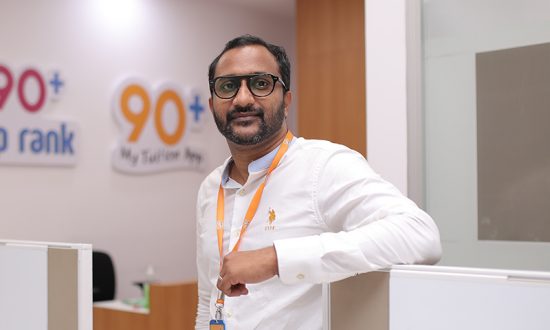Smijay Gokuldasan is the CEO and Chief Sales & Marketing Officer of 90+ My Tuition App, India’s best in-class Tuition App helping students to achieve exceptional grades through digital visualization in an affordable way. Smijay, a pro at marketing, has established the company’s marketing structure and sales model. Smijay has an overall experience of 12 years in the banking and FMCG industry. e is a MBA from Institute of Chartered Financial Analyst of India.
For everyone, the epidemic opened Pandora’s Box. This has had an impact on education at all levels. The 18-month loss of experience was devastating, but going digital saved the day by allowing people to learn during the pandemic. With schools and colleges reopening, a Phygital approach to education should be implemented.
According to the Central Square Foundation’s “(Re)Build Back Better” report, “Phygital learning” is a method of learning in which kids benefit from technology while also receiving human assistance at home and in-classroom instruction when needed.
Differential Loss
Students at all levels have been affected by the learning gap that has been created by the pandemic, but in various ways. Students in kindergarten through senior high school have been missing out on hands-on learning in the classroom. Students pursuing higher education have lost their most beloved college experience, which aids in the development of their personalities and prepares them for life ahead.
Double-edged sword
During the pandemic, digital learning has been a double-edged sword. The transition to digital was not a one-time event, but rather a sustained process. In the face of the epidemic, it was digital learning that kept the learning continuing. Teachers all across the world, especially those who aren’t tech-savvy, put in a lot of effort to keep their students learning. Entrepreneurs facilitated the digital revolution by developing collaborative tools, platforms, and applications that allowed students to learn outside the four walls of the classroom. Digital also gave students more learning flexibility and improved one-on-one assessment and feedback. There have been certain missing parts in digital learning, such as less peer interaction, a lack of sports and extracurricular activities, but all of these deficiencies can be remedied with time.
Way Ahead
As we continue to fill up the gaps, the path forward should be Phygital, where students can benefit from the best of both modalities, namely physical classroom learning and digital learning. A 3:3 strategy can be used, in which three days are dedicated to digital learning and the remaining days are used for on-campus evaluation, sports, and extracurricular activities. This will restore students’ and teachers’ enthusiasm for learning and development, as well as solve issues such as online fatigue, limited attention span, and the lack of internet connections that are common in digital learning.




